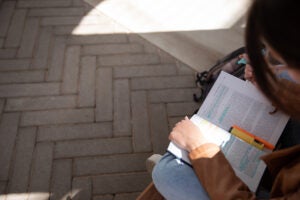AUSTIN, Texas—The fundamental capacity limits of wireless networks may finally be characterized thanks to a $400,000 National Science Foundation Early Career Development (CAREER) award given to an electrical engineer at The University of Texas at Austin. The CAREER awards are prestigious grants for young teacher-scholars expected to be future academic leaders.
“Trying to figure out the maximum amount of information you can push through a wireless network is a classical problem,” said Sriram Vishwanath, the lead investigator of the grant and an assistant professor with the university’s Wireless Networking and Communications Group. “Everyone’s trying to get at it from their own field. But the problem is there is a lack of appropriate tools within any one field to tackle the problem in its entirety.”

|
|
Sriram Vishwanath, an assistant professor in electrical and computer engineering, has received a $400,000 National Science Foundation Early Career Development Award to discover the capacities of wireless networks. Photo: Caroling Lee |
Vishwanath’s advantage is his understanding of three fields with useful approaches to studying network capacity. The fields are: information theory (studying how much information a particular environment holds), optimization theory (studying the optimum method for accomplishing a given task) and coding theory (translating information from one form into other, more useful forms).
“I want to combine these fields and come up with a whole new theory, a new methodology that’s never existed before,” Vishwanath said.
To begin, he will model simple networks of multiple computers or phone systems linked together. He will use information theory to study how information flows through these networks, then optimization theory and mathematical, optimization models to find the maximum amount of information flow. Finally, coding theory will be used to interpret the results and verify maximum flow capacity on real networks. The principles Vishwanath learns from simple networks will be generalized to more complicated networks using the three-step approach to determine how to easily transfer information between the networks’ components.
“There are two things you can do in research—apply innovative ideas from unrelated fields to your own field of study, or invent a completely new way of doing something,” he said. “This proposal does both.”
The toughest step, he added, will be developing a general theory to reveal the capacity of any network. By modeling networks, Vishwanath will develop techniques that allow network users to find a system’s capacity, or if unattainable, to find values extremely close to it. The general capacity theory developed by Vishwanath will provide many benefits, such as allowing anyone, a network designer, an operator or an end user in a network, to know the maximum amount of information his or her network can send, and the best strategy for achieving maximum throughput.
For more information contact: Becky Rische, College of Engineering, 512-471-7272.



